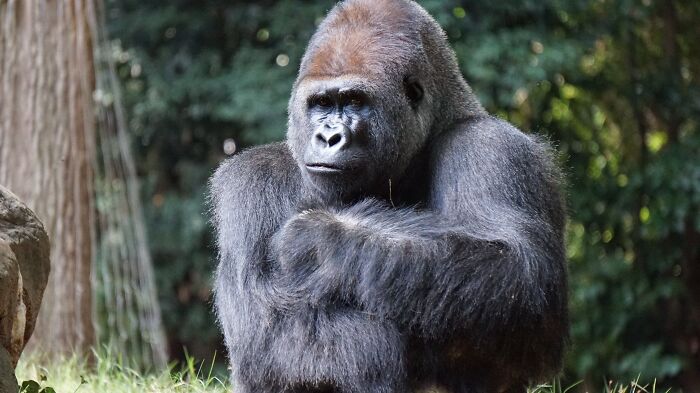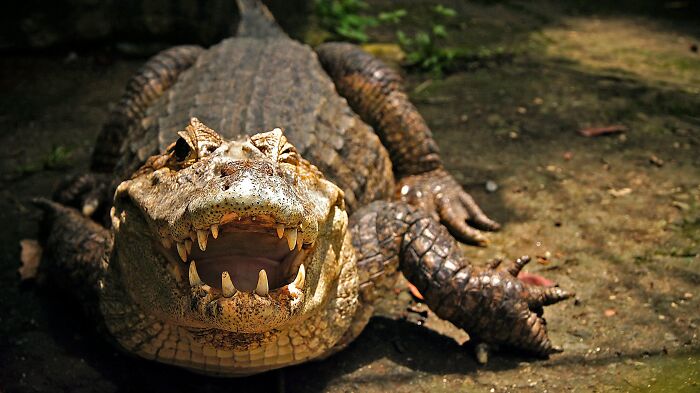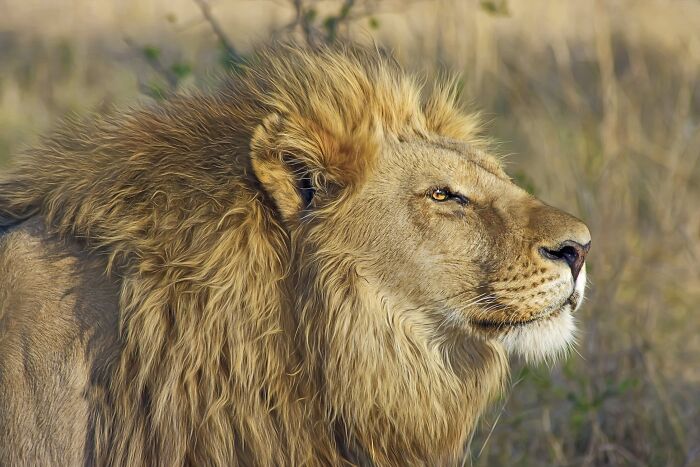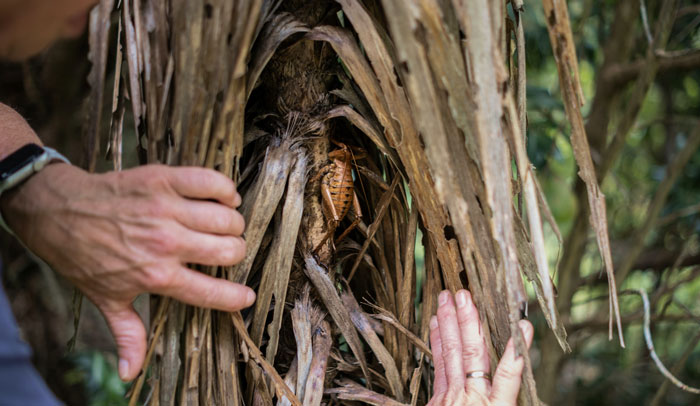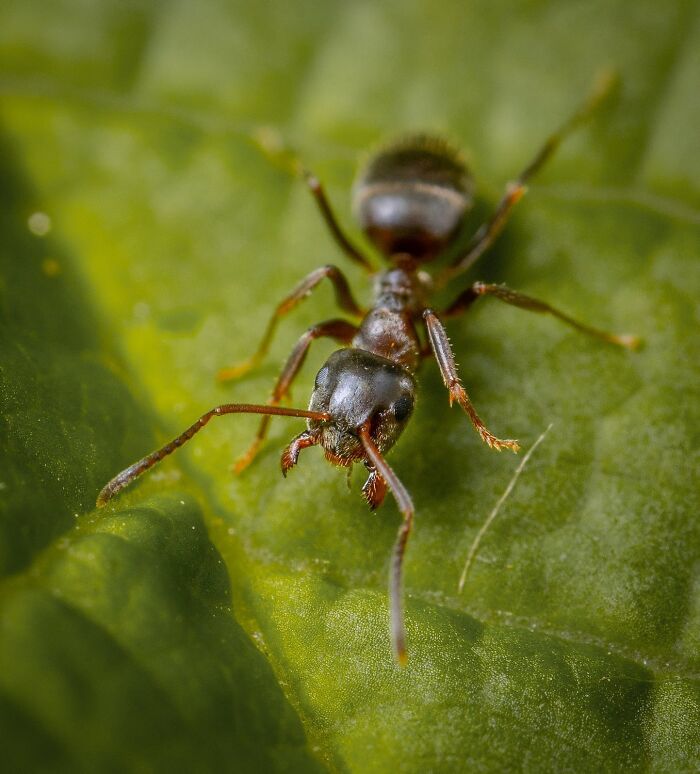Not every animal is made the same. Of course, you already know that, but just think of it - some of them are seemingly only there to make our eyes tear up from cuteness, others were made to scare us, and then there are some who’d be loved only by their mothers (talking to you, sea cucumbers, you certain part of human anatomy-shaped beasts). However, there’s also another category that certain animals fall into - tough. Yup, some of them are pretty ruthless when it comes to surviving in the great outdoors, and that’s precisely why they’ve found their way into our fancy little list dedicated to the toughest animals out there.
Now, our list opens with the one and only, the legendary honey badger, the absolute toughest animal in the world, and we’d prefer it to stay that way. And if it’s your first time hearing about this little rascal, just wait until you read the description under its photo (disclaimer - it eats bees as if they were potato chips). Then the list continues with some adorable animals which you’d probably never categorize as tough, like the emperor penguin, but just wait until you read about the conditions they live in. We wouldn’t wish them even on sea cucumbers! And if these two cool animals aren’t tough enough for you, just wait until you read about polar bears, Cape buffalos, and Tasmanian devils. By the way, the latter’s name is pretty self-explanatory in the scale of ruthlessness, we think.
So, ready to take a look at some of the scary animals that roam the face of the earth? Be warned that some of them just might look cute, but it would be a whole ‘nother story to meet them eye to eye! We would absolutely not recommend that. Anyway, scroll down below, check out the dangerous animals, rank them the way you like (except for honey badger, leave it where it is), and share this article with your friends!
This post may include affiliate links.
Siberian Tiger
Between 350 and 700 pounds, Siberian and Bengal tigers are around the same size, but the Siberian prevails because it lives in a harsher environment. These cats are skilled hunters, and to find prey, they will explore vast territories covering hundreds of miles through various terrain.
Only 400 estimated to be left in the wild, we really have a thing for killing of beautiful creatures, perhaps because they are such exceptional predators.
Hippopotamus
Hippos kill more people in Africa than any other animal, but not because they are inherently hostile or violent (though they can be both). Due to their size and preference for sitting submerged in rivers where people fish, bathe, and play. Hippos frequently cause trouble by accident, surfacing under boats, throwing people overboard, and inciting panic that can turn violent when a 3,000-pound animal with 20-inch teeth can move well in the water and run up to 20 miles per hour becomes startled.
Gorilla
The gorilla is highly sociable animal with prominent families, complex communication systems, and the capacity to create and use tools. They are not tough; instead, they are formidable. An adult silverback is at least six times and possibly as much as twenty times stronger than a person, according to scientific estimates.
Polar Bear
Polar bears are the biggest carnivorous bears in the world and the most prominent land carnivore overall. Instead, polar bears spend a large portion of the winter months on the Arctic pack ice, occasionally traveling tens of thousands of kilometers in a year in search of their preferred food, seals. Polar bears have been known to swim up to 100 miles through the icy Arctic seas in search of prey when hungry.
Saltwater Crocodile
A maximum length of a saltwater crocodile is 17 feet and a weight of 2,000 pounds. They also have the most substantial bite ever observed in a laboratory, with the ability to sever a cow's skull in a single chomp. Due to their size, aggression, and natural habitats in dense populations of people (such as India, China, Bangladesh, and Malaysia), saltwater crocodiles occasionally pursue humans as prey, but the actual number of deaths each year is still relatively low.
Jaguar
The jaguar is the most skilled predator in South and Central America. Jaguars are solitary creatures who hunt covertly, startling their prey before outrunning it with a remarkable combination of speed and strength. Jaguars can pull a 500-pound deer up into a tree while climbing and have the most substantial bite of any large cat. They are also outstanding swimmers.
Grizzly Bears
These massive animals weigh hundreds of pounds (at least one has been found to exceed 1,500 pounds) and have four-inch claws and terrifying jaws. Despite their massive size, they move at incredible speeds, reaching up to 30 miles per hour. These creatures are usually content to feed themselves on berries, roots, nuts, and leaves, but if you come across one, keep your distance.
Grey Wolf
It has a cold tolerance of -40 degrees and a top speed of more than 40 miles per hour. Its biting force can reach 1,500 pounds per square inch. Furthermore, if you come across a large group, you could be sure that you will not get bitten just once.
Don't forget to wish @Well-Dressed Wolf a happy birthday 🤎 I think it's today!
Mountain Goat
The best rock climber in the world. Their cloven hooves have a cushioned sole to grip snow, ice, and particularly rock faces, even those that seem impossible. Mountain goats can jump 12 feet, are used to high-altitude and low temperatures, and are more closely related to antelopes than goats. They also sport stylish beards.
Honey Badger
They eat everything (literally everything), they use tools, they're always on the lookout to make a fight, they have teeth strong enough to bite through metal locks, and their skin is as tough as buffalos (which is like a fifty times larger animal). So yup, the tiny little honey badger is not to be messed with, and they will fight lions and hyenas if need be. Tough little fellas!
African Elephant
The African elephant, which can reach heights of up to 13 feet at the shoulder and weighs around 14,000 pounds, is the largest living terrestrial animal. Elephants often treat their habitat terribly, tearing down trees and consuming more than 500 pounds of leaves and branches in a single day. Elephants can gallop at 15 mph and quickly flip a car or truck when angry or scared, making them the most hazardous animal living. Its trunk can raise 700 pounds by itself.
they can eat trees. tear them out/push them over and chew through the bark and everything, it's crazy
Lion
The Sub-Saharan African grassy savannahs are the lion's natural environment. Since they hunt in packs, lions are the undisputed apex predators of the continent. They ambush antelopes, zebras, warthogs, and pretty much everything else with four legs that isn't an elephant, rhino, or hippo, as well as cheetahs, leopards, and hyenas, which they will kill to eliminate competition. Fortunately, the majority of the prey that lions enjoy eating are lazy cats. They enjoy naps more than anything and can sleep for up to 20 hours every day.
As they are literally sleepy cats, I wonder if anyone has researched whether or not a laser pointer can distract an attacking lion long enough to get the humans to safety.
Slow Loris
Because of its prominent eyes and long limbs, this nocturnal primate can resemble an adorable stuffed animal. If it lowers an elbow be cautious since these animals have toxin-producing glands in their upper arms that they lick to deliver poison into their mouths before attacking their prey.
This adorable stuffed animal will POISON YOU WITH ITS TOXIC ARMPITS. But other than that, it is quite pleasing.
Komodo Dragon
The world's largest lizard, which roams some of the Indonesian archipelago's islands and hunts anything it can capture and bite with its enormous, bacteria-filled jaws, is the closest thing we have to a dinosaur. Komodo dragons may grow up to 10 feet long and weigh 150 pounds, giving them full reign of these islands with no predators.
Spotted Hyenas
In an unexpected encounter with a person, these carnivores are likely to have the upper hand. They attack the face, neck, and spine, inflicting damage to soft tissue and internal organs. Their bite has a 1,000-pound-per-square-inch force.
Rhinoceros
Rhinos have massive horns that can gore any animal that makes the foolish decision to stage an attack, weigh at least 2,000 pounds and occasionally as much as 4,000 pounds, and have thick, almost armored skin. Adult rhinos don't have any natural predators, with the exception of hunters. Rhinos are among the most endangered creatures on earth due to the demand for their horns in Asia, with the African species disappearing incredibly quickly.
Really sad the rate at which these magnificent creatures are disappearing due to us.
Weta
One of the largest insects in the world, this New Zealand pest resembles a dinosaur grasshopper. Wetas aren't highly violent, but they will bite and scrape with their sharp legs if they feel threatened. The fact that the weta looks like it belongs in a science fiction book, instead, is what makes it such a fearsome creature: The Mountain Stone Weta can be submerged in ice for several months before returning to normal as soon as it thaws. How? Because of a protein that prevents ice crystals from forming in its blood-like fluid.
Wolverine
While weighing only 20 to 50 pounds, they outweigh their size by preying on squirrels, beavers, bison, moose, and mature deer, killing creatures several times their own size.
Giant Anteater
Giant Anteater has those enormous claws which are capable of more than just disturbing insect nests. Researchers have discovered multiple instances in which the furry animal attacked people, killing one hunter in northwest Brazil (after he attempted to kill it with a knife) and slicing the femoral artery of a hunter in his seventy-fives in the Brazilian state of Mato Grosso.
How many years are there in the “seventy-fives”? Honest question, I’m not there yet.
Tasmanian Devil
The creature that only exists on the Australian island of Tasmania, can legitimately claim to be the largest carnivorous marsupial in the world. A study found that the Tasmanian devil possesses the most substantial bite of any creature on the planet. The typical weight of a devil is around 20 pounds, yet they have a "Bite Force Quotient" of 181, which is roughly twice as strong as a hyena and about 60 points higher than a lion. It's sufficient to bite through metal traps and even break bones.
Moose
Don't interfere with a mother moose's time with her young or catch one in a foul mood even though they may appear calm and laid back. But, of course, the main danger posed by these critters is that they are more likely to cause collisions due to their top-heavy build and propensity to meander into the road at night.
Dung Beetle
The dung beetle has the highest strength-to-weight ratio of any animal on earth. Researchers have observed dung beetles, found worldwide, consistently pushing balls of fresh animal poop that were 1,141 times their weight. These balls frequently weigh more than 200 times the beetles' weight. That translates to a 150-pound human moving 80 tons.
Harpy Eagle
The most intriguing aspect of these bizarre-looking birds, the heaviest eagles in the world, is that females, who may weigh up to 22 pounds, are almost twice as heavy as males. Their natural habitat extends from Mexico down into Argentina. Harpy eagles will hunt little deer when those animals aren't available, but they must first break them up into pieces because they are too heavy to fly with.
“One of the most contrary of the eagles, Harpies will only hunt little deer when those animals are not available; satisfying for the deer, but very frustrating for the eagles.”
Bald Eagles
Although these ferocious birds may be protected by federal laws from harm, don't let that fool you into underestimating their fortitude. These animals are the heat-seeking missiles of the animal realm, with wingspan lengths up to 7.5 feet and top speeds of 99 mph when diving for food.
The African Buffalo
The African buffalo is a vicious, erratic animal unafraid of conflict and is to blame for up to 200 human fatalities each year in Africa.
Wow! This one is a little harsh. All these other animals are cute, cuddly, majestic. And the buffalo is vicious and erratic. I guess the African buffalo is the ex bf or gf of the animal kingdom.
Bullet Ant
The bullet ant is a species that lives on the ground in rainforests in Central and South America. Its sting is thought to be so terrible that it makes you feel as though you've been shot. The pain can continue up to a full day, and to make matters worse, the venom stays in the body.
To be clear: no one “shoots” bullet ants out of any kind of gun.
Anaconda
Anaconda is a dreadful predator and will eat just about anything it can overpower, even livestock that wanders too close to a river where an anaconda is hiding. So it's instead consoling to learn that anacondas are not poisonous. They instead kill via constriction. However, unlike common perception, anacondas don't crush their prey. Instead, the prey passes unconscious and finally dies from a lack of oxygen due to the predator's unpleasantly tight hug cutting off blood flow to its vital organs.
Anacondas are not tough XD they're just big chonky soggy noodle derps. They live most of their life in water and rarely interact with people. They are not agressive (no snake is) (if they threaten to bite it's out of fear and defense, not agression.) Also anacondas are incredibly slow on land because they can weigh up to 500lbs for a huge female. Also they can not eat a human. That's a myth. Maybe a small child but they like to stay away from humans because humans are the real monsters. Love the noodles :)
Black Mamba
The Black Mamba has one of the most dangerous venoms on the earth and is swift on the ground and in trees. If you get bitten, you'll probably pass out within an hour. Unfortunately, you only have about 15 hours left if you don't have anti-venom to protect you from the potent neurotoxin.
Beavers
Beaver's huge teeth are always growing, they need to bite into something. These river-dwelling animals frequently keep to themselves and their dams, but they are highly protective of their territory and can cause serious harm if they are crossed.
Emperor Penguin
The emperor penguin is the tallest and heaviest of all penguin species. Emperor penguins are found in the roughest and most unforgiving environment on earth—Antarctica. Emperor penguins travel up to 75 miles over ice to mate during the mating season, which is naturally winter. Then, for several weeks, the males watch a fertilized egg while suffering frequent blizzards, 100 mph winds, and temperatures as low as -40.
Camel
A camel can survive up to 8 days without water and up to a month or more without food and is unaffected by temperatures of 110 degrees, even when carrying 200 pounds or more on its back. Because of this, a camel's pee has the consistency of syrup, and Bedouins can burn its waste without even drying it first. Camels can lose 40% of their body weight without suffering significant consequences since they are so well acclimated to the heat and dehydration.
Deathstalker Scorpion
The Deathstalker has the worst sting of any scorpion on Earth, although it's unlikely to cause death. The unfortunate fact is that a Deathstalker sting will still hurt severely. Does that imply that people behave rationally and steer clear of these 4-inch-long green and yellow varmints? Nope. Surprisingly, a lot of people maintain Deathstalkers as pets.
Tardigrade (Water Bear)
The tardigrade is one of the tiniest animals in the world; it seldom grows longer than 1.5 mm and can only be seen under a microscope. Even though there are more than 900 species of tardigrades, they can be found almost anywhere on the planet and in any habitat, giving these tiny creatures their toughness. They continue to exist at the ocean's bottom, in hot springs, and even at the summit of Mount Everest.
Amazing creatures, " can survive being frozen at -272° Celsius, being exposed to the vacuum of outer space and even being blasted with 500 times the dose of X-rays that would kill a human."
Golden Poison Dart Frog
The golden poison dart frog is small, just a few centimeters long. It still has enough poison in it to kill ten grown men. It lives in the damp Colombian rainforest and is extremely lethal since its poison is stored in glands just beneath its skin rather than in its fangs, which means that even touching the frog can be fatal.
Brazilian Wandering Spider
The Greek name of this spider, phoneutria, translates to "murderess." It is thought to be the most poisonous spider in the world, and its bite will result in excruciating pain, loss of muscular control, and ultimately paralysis and death.
Tarantula Hawk
This enormous flying creature is a wasp that hunts spiders, not a tarantula or a hawk. The "Schmidt sting pain index," created by entomologist Justin Schmidt to assess the intensity of insect bites on a scale of 1 to 4, gives the tarantula hawk one of only two scores of 4.
Wasps and bees do not bite! They sting with a stinger on their rear. Even medical personnel talk about "bee bites."
Boomslang
These large, vividly green natives of Sub-Saharan Africa aren't often violent unless provoked, but when they do bite, mayhem ensues. Their venom is not only deadly but may make their prey bleed from every pore, opening their lips up to 170 degrees. Truly Scary!
The prey’s lips open 170 degrees or the snake’s? (This one is a roller coaster!)
Cobra
These reptiles, which can be found in Africa, the Middle East, India, Southeast Asia, and Indonesia, are easily identified by their bright hoods and upright postures when agitated. Some predators will even spit venom onto their victims, which assaults the body tissue and causes excruciating pain.
Anyone who wears a hoodie and randomly spits on things could rightfully be called “The Human Cobra.”
Cone Snail
Who knew a snail could be so resilient? It turns out that this species is capable of instantly paralyzing animals due to its toxic venom, which must act quickly because the prey is unable of resisting the snail's venom. These brown-and-white shelled killers, which can reach lengths of around six inches, are most frequently found in the Indo-Pacific reefs.
Considering that is literally one of the most 'original' BP articles/ lists I've seen in a long, long time, I can't help but upvote (assuming the author didn't copy and paste from other sites, but it's BP so 🤷🏼♀️who knows). Anyway, great work to the author if you wrote this and all the blurbs about the different animals.
Prairie Rattlesnake
If you hear this one, you'll recognize it. Its diamond-shaped head and scales, green-gray or green-brown with dark blotches, can be used to identify this venomous pit viper, located in the western United States and southwest Canada. The prey can wander off and collapse before it follows the scent to dinner because they strike quickly and widely—up to half their body length—depositing 20 to 50 percent of their stored venom in each attack.
Considering that is literally one of the most 'original' BP articles/ lists I've seen in a long, long time, I can't help but upvote (assuming the author didn't copy and paste from other sites, but it's BP so 🤷🏼♀️who knows). Anyway, great work to the author if you wrote this and all the blurbs about the different animals.
Yeah....... glad we don't need to do that where I live. No thank you! Lol
Considering that is literally one of the most 'original' BP articles/ lists I've seen in a long, long time, I can't help but upvote (assuming the author didn't copy and paste from other sites, but it's BP so 🤷🏼♀️who knows). Anyway, great work to the author if you wrote this and all the blurbs about the different animals.
Yeah....... glad we don't need to do that where I live. No thank you! Lol

 Dark Mode
Dark Mode 

 No fees, cancel anytime
No fees, cancel anytime 







